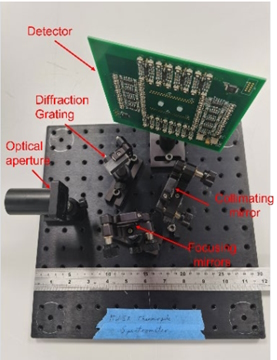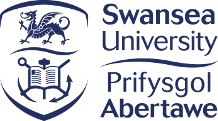Completed: Introducing high-temperature hyperspectral electronics to the foundation industries
In collaboration with Tata Steel
Hyperspectral metrology utilising a visible-range hyperspectral imaging system has been verified through testing with high-temperature hydrocarbon flames. Gas-phase flames were imaged, and the spectral emission of methane-air flames comprehensively investigated. The results demonstrated that the newly developed system can capture the gas-phase flames precisely and that the high spatial resolution targets the combustion reaction zone. The ratio of intermediate products with characteristic bonding (C2 and CH) may be determined, thereby monitoring the mixture of fuel and oxygen and enabling improvements in energy efficiency.
In addition, a mid-wavelength, infrared (MWIR) spectrometer was successfully built with low-cost, commercial off the shelf parts. The optical design software, Zemax suggested that a spectral range of 3 – 4 μm with resolution of <20 nm / pixel was achievable with the current design. The MWIR detector was tested with a blackbody furnace, demonstrating the circuit worked correctly and that the detector had adequate sensitivity to temperatures that radiate energy at these wavelengths. Although proof of concept for monitoring of NOx emissions was broadly shown, the arrangement of the optics required further improvement due to difficulty in alignment, necessitating a higher tolerance optic block.

Our spin-out company, PyrOptik Instruments Limited, will look to exploit the outputs of this work commercially, under university licence, offering services to the foundation industries, particularly for the energy generation.
Publications
Experimental investigation on the effects of a mesh in the downstream region of a combustion-driven Rijke tube on self-excited thermoacoustic oscillations, https://doi.org/10.1016/j.expthermflusci.2023.111061

Prof. Jon Willmott
University of Sheffield
Published: September 23rd, 2022
Posted in
projects





